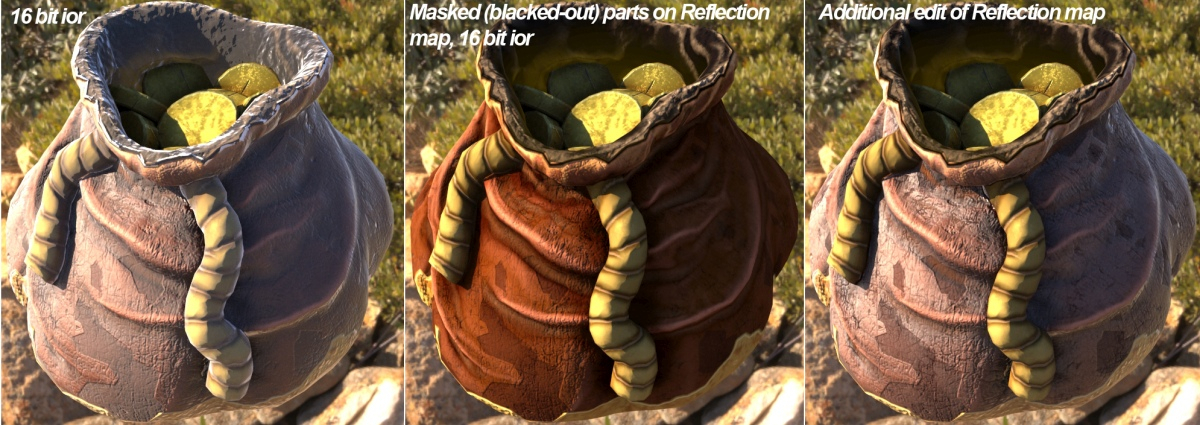

You can do this by using the VRayNormalMap shader, particularly its flip channel options highlighted in the picture below: If you are using DirectX (Y-) normal maps, you need to flip the green channel of the normal map to work correctly. V-Ray works with OpenGL (Y+) normal maps. DirectX and OpenGL use different directions for the green channel (Y- / Y+). Please note that exporting DirectX and OpenGL normal maps using the Converted Maps in the Substance Painter exporter takes both the normal and height information, and combines them into a normal map. Substance Painter exports both DirectX (Y-) and OpenGL (Y+) normal maps. In this example, the normal maps are exported in tangent space from Substance therefore, in V-Ray, we need to specify that the Normal Map is in tangent space (visible in the picture below). In order for the normal map to work correctly, you need to use the same normal map space in both Substance and V-Ray. Height maps can also be used as displacement (see next paragraph).ĭepending on the AEC/DCC used, the Substance normal maps can be loaded directly into the Bump map slot of the V-Ray Material or into a VRayNormalMap texture which is plugged into the V-Ray material bump slot. Height maps can be directly loaded into the Bump slot of the V-Ray material. This texture is loaded into the Diffuse map slot of the V-Ray material. The Diffuse / Base Color map stores the color information for your material. Here is what the textures and the model look like in Substance Designer. However, if you want to better support your workflow and get texture exports that better fit your needs, we recommend creating your own presets.įor this step, refer to the Adobe Documentation where the exporter is explained in detail.įor this article, we prepared a retro night light that is textured with all the maps mentioned. These Adobe presets can be used for most common materials. The V-Ray presets export the following maps:



 0 kommentar(er)
0 kommentar(er)
